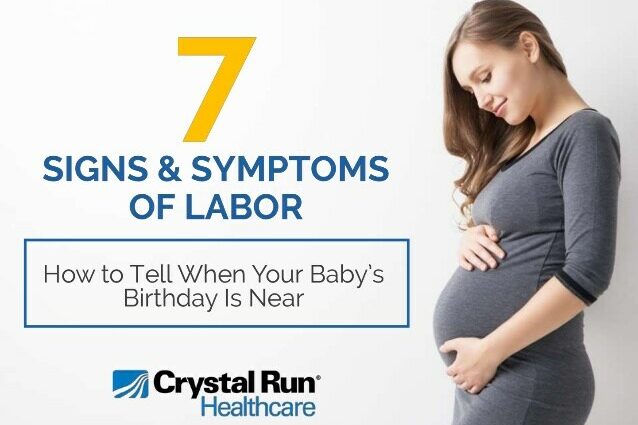Contents
Recognize the signs of onset of labor
Clues but no convincing signs
At the end of pregnancy, it is common for the expectant mother to experience new sensations:
- a feeling of heaviness in the pelvis and pain (sometimes comparable to small stings) in the pubis and vagina, a sign that the baby is starting to descend into the pelvis;
- a feeling of tightness in the lower abdomen due to the relaxation of the joints of the pelvis which, under the effect of hormones, begin to move aside for the passage of the baby;
- severe fatigue and nausea also due to the hormonal climate at the end of pregnancy, and more specifically to prostaglandin with a slightly laxative effect;
- the loss of the mucous plug, that mass of cervical mucus that hermetically seals the cervix. Under the effect of contractions at the end of pregnancy which ripen the cervix, the mucous plug can evacuate in the form of sticky, translucent or brownish discharge, sometimes accompanied by small streaks of blood;
- a frenzy of cleaning and tidying up which would be, according to some specialists, a behavior common to all mammals. We also speak of “nesting instinct” (1).
All of these signs indicate that the body is actively preparing for childbirth, but they are not true signs of the onset of labor requiring a trip to the maternity ward.
The onset of regular painful contractions
The uterus is a muscle made up of different types of fibers that will contract to allow the cervix to change and the baby to descend into the pelvis. At the end of pregnancy, it is normal to feel “pre-labor” contractions which will promote the maturation of the cervix for the D-day. These are then non-painful or slightly painful contractions, which disappear after 3 or 4 recurrences. spaced 5-10 minutes apart.
Unlike these preparatory contractions, the labor contractions do not stop, gain in intensity and are increasingly long and closer together. It is precisely the frequency and regularity of these contractions that indicate the onset of labor. Depending on the woman and the parity, labor contractions are set up according to very varied patterns, but we recommend that you go to the maternity ward:
- after 2 hours of contractions every 5 to 10 minutes if it is a first baby;
- after 1h30 of contractions every 10 minutes for multiparas.
The mother-to-be must also take into account her tolerance to contractions and listen to her feelings. If the contractions are not regular but so strong that they prevent speaking, if it becomes impossible to cope with them alone or if the anguish is real, it is advisable to go to the maternity hospital at least. to be reassured. The future mother will always be well received there by the team of midwives accustomed to this kind of situation.
Some women do not really experience contractions but rather frequent urges to have a bowel movement or to urinate. Still others will feel the contractions at the top of the stomach, under the ribs, while some moms will feel them in the lower back. If in doubt, it is advisable to go to the maternity ward.
Finally, note that to detect false labor, that is to say contractions having no effect on the cervix, future mothers are advised to take a bath and an antispasmodic. If the contractions persist, they are most likely “real” contractions.
The loss of water
Throughout pregnancy, the baby evolves in the amniotic cavity, a pocket made up of two membranes (the amnion and the chorion) and filled with amniotic fluid. When the cervix is erased and the mucous plug evacuated, the baby is then only protected by these membranes or “water bag” (lower pole of the amniotic sac). Normally, membranes rupture spontaneously during fully dilated labor, but sometimes this rupture occurs during labor or even before. It is the famous “water loss” or, in obstetrical language, “premature rupture at term before labor” which concerns 8% of pregnancies (2). The amniotic fluid – a transparent, odorless and warm liquid – will then flow through the vagina in small streams if it is a crack in the pouch or more frankly in the event of a rupture. If there is the slightest doubt, especially in the face of a slight discharge that can be mistaken for vaginal secretions, it is advisable to go to the maternity ward where a test will be carried out to verify whether it is indeed amniotic fluid.
The loss of water can occur before the onset of labor and contractions but it requires going to the maternity ward because once the pouch is ruptured, the baby is no longer protected from infections. There is also a risk of prolapse of the cord: it is drawn downwards and risks being compressed during childbirth. After premature rupture at term before labor, half of future mothers give birth within 5 hours and 95% within 28 hours (3). If labor does not start after 6 or 12 hours, it will be induced due to the risk of infection (4).










